When I first found vellum paper, it felt like unlocking a secret world. Those delicate, translucent sheets whispered stories of artistic possibilities. The journey from ancient parchment to modern crafting material is fascinating.
Types of vellum paper has changed a lot over centuries. Originally made from calf skin in Egypt around 3000 BC, today it’s made from cellulose fibers. This change makes vellum paper more accessible and eco-friendly than ever.
Your creative projects can now use this amazing material. Whether you’re making wedding invitations, scrapbooking memories, or creating artistic layers, vellum paper is versatile. Its semi-translucent surface creates stunning visual effects that regular papers can’t match.
Modern vellum comes in many finishes – from matte to shimmery. This gives you endless ways to make your crafting unique. Brands like Tonic Studios offer a wide range of options for different artistic needs.
Imagine turning simple projects into unforgettable memories with just one sheet of this magical paper. Vellum paper uses range from delicate card overlays to adding depth in mixed media artwork. It’s a true chameleon in the crafting world.
Table of Contents
Understanding Modern Vellum: From Animal Skin to Plasticized Cotton
Vellum has changed a lot over time. It used to be made from animal skins, but now it’s a modern paper material. Let’s explore its history and how it’s made today.
Historical Evolution of Vellum
Vellum started in the 6th century B.C. It was made from calf hide. Artisans cleaned, stretched, and prepared the skin for writing.
The process was complex. It took many steps to get the right texture and strength.
Contemporary Manufacturing Process
Now, vellum is mostly made from plant fibers. It has:
- Plasticized cotton rag fibers
- Smooth, non-porous surface
- Various weights and textures
- Enhanced translucency
Physical Properties and Characteristics
Today’s vellum is special. It’s made with modern techniques that give it:
- Exceptional durability
- Translucent appearance
- Lightweight composition
- Versatile application
Designers, artists, and professionals love modern vellum. It’s perfect for many creative and technical uses.
Types of Vellum Paper and Their Specifications
Vellum paper comes in many types for both professionals and hobbyists. Knowing the different Types of vellum paper types and specifications helps you pick the right one for your project.
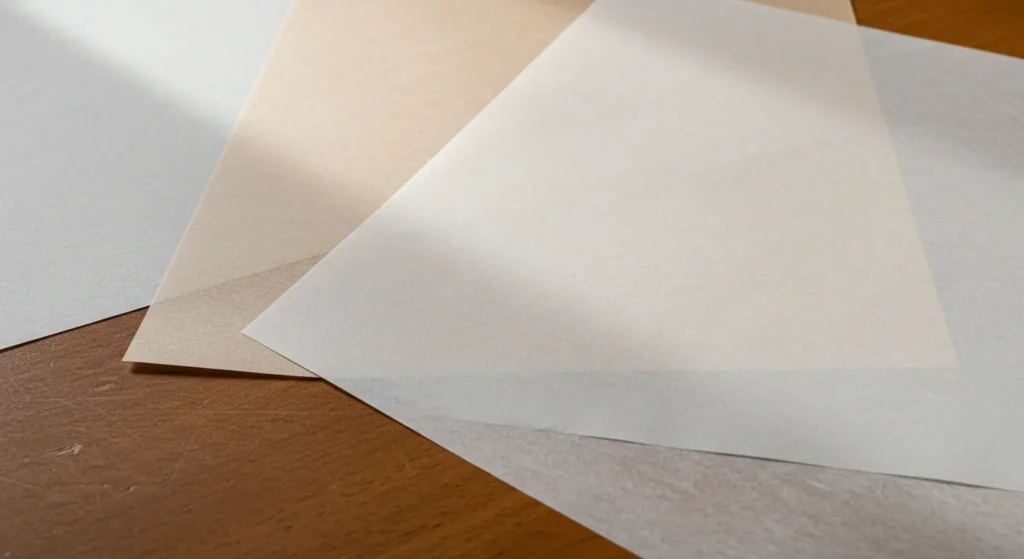
Vellum is made for various uses. Your choice depends on what you plan to use it for, like drafting, crafting, or printing.
- Translucent vellum: Ideal for tracing and overlay techniques
- Drafting vellum: Designed for technical drawings and architectural plans
- Craft vellum: Perfect for scrapbooking and card making
- Printing vellum: Suitable for professional marketing materials
When picking Types of vellum paper, look at these important specs:
| Vellum Type | Thickness | Transparency | Primary Use |
|---|---|---|---|
| Translucent Vellum | 17-48 lb | High | Tracing, Overlays |
| Drafting Vellum | 80-300 gsm | Medium | Technical Drawings |
| Craft Vellum | 100-170 gsm | Varied | Scrapbooking, Cards |
“Choosing the right vellum paper can transform your creative project from ordinary to extraordinary.”
Your choice of vellum affects the final look. Think about transparency, weight, and printing method for the best results.
Professional tip: Test a small sample before a big print. Different vellum types react differently to printing and conditions.
Essential Properties of Translucent Vellum
Translucent vellum is a versatile material for creative folks. It has unique qualities that make it great for many projects. Knowing about vellum’s transparency can help you use it better in your work.
The world of translucent vellum is full of possibilities. It’s perfect for creating delicate overlays and complex designs. This paper offers many creative options for designers.
Transparency Levels
Vellum can be slightly opaque or very clear. These differences let you create amazing visual effects. You can use different levels to:
- Create dimensional layering
- Soften background designs
- Add subtle depth to artwork
- Generate unique visual textures
Weight and Thickness Options
The weight of translucent vellum is key to its use. It usually ranges from 17 to 48 pounds. The weight affects its durability and what it’s best for:
- 17-30 lb: Great for home printing and light projects
- 30-40 lb: Best for professional presentations
- 40-48 lb: Ideal for archival and high-end designs
Surface Textures Available
The texture of translucent vellum greatly affects your work. You can find smooth, lightly textured, and embossed surfaces. Each texture has its own benefits for different artistic techniques.
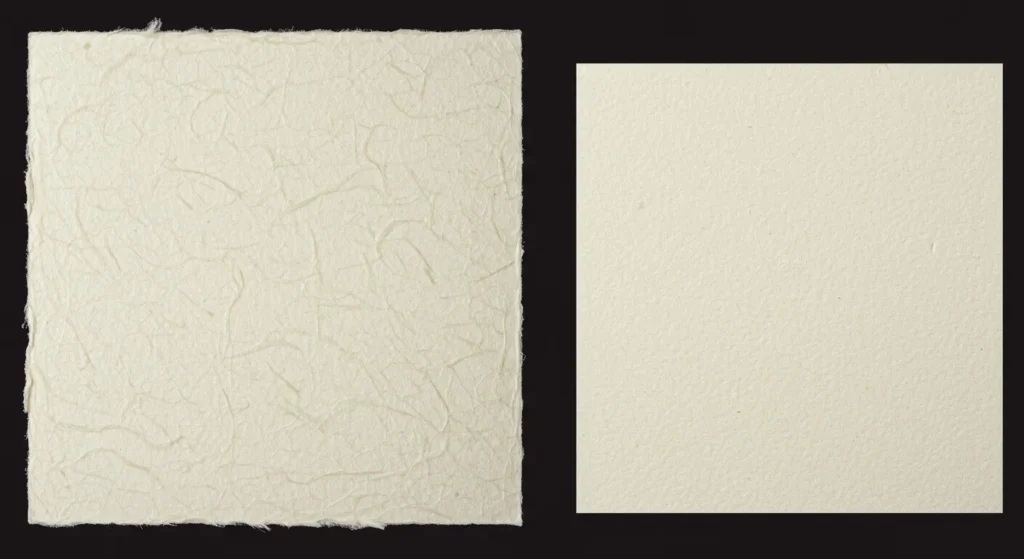
Pro tip: Always test different vellum weights and textures to find the perfect match for your specific project needs.
Professional Applications in Architecture and Engineering
Vellum has been key in architecture and engineering for decades. From the 1950s to the early 1980s, it was the top choice for technical drawings. Architects and engineers use vellum for its ability to create detailed, lasting documents for big projects.
Vellum’s uses in these fields are wide-ranging. Drafting pros love it for several reasons:
- It’s very translucent, making it great for layering designs
- It’s durable, lasting for years in storage
- Its smooth surface is perfect for detailed drawings
- It stands up well to moisture and changes in the environment
Over the years, vellum in architecture has changed a lot. Drafting cloth was first used in the 1850s. Then, in the 1970s, polyester (Mylar) became the go-to film. This material can last over 500 years if stored right, making it perfect for engineering needs.
| Vellum Type | Professional Application | Primary Usage Period |
|---|---|---|
| Drafting Cloth | Process Drawings | 1850-1950 |
| Acetate Film | Tracing and Reproductions | 1939-1960s |
| Polyester (Mylar) | Technical Drawings | 1970-2000s |
Today, Some Types of vellum paper is just as important in engineering. It’s used for blueprints, technical layouts, and detailed architectural plans. Even with digital tools, many professionals prefer vellum for its reliability and feel.
Crafting and DIY Projects with Vellum
Vellum crafting opens a world of creativity for DIY fans and crafters. This material turns simple projects into amazing art. It’s perfect for scrapbooking or making cards, adding depth and elegance.
Scrapbooking Techniques
DIY vellum projects are perfect for scrapbooking. Its translucent quality lets you create stunning layered effects. Try these cool techniques:
- Overlay photos with vellum for a soft, Instagram-like look
- Use Types of vellum paper pockets to show off vintage photos without glue
- Make ombré effects by layering translucent vellum sheets
Card Making Ideas
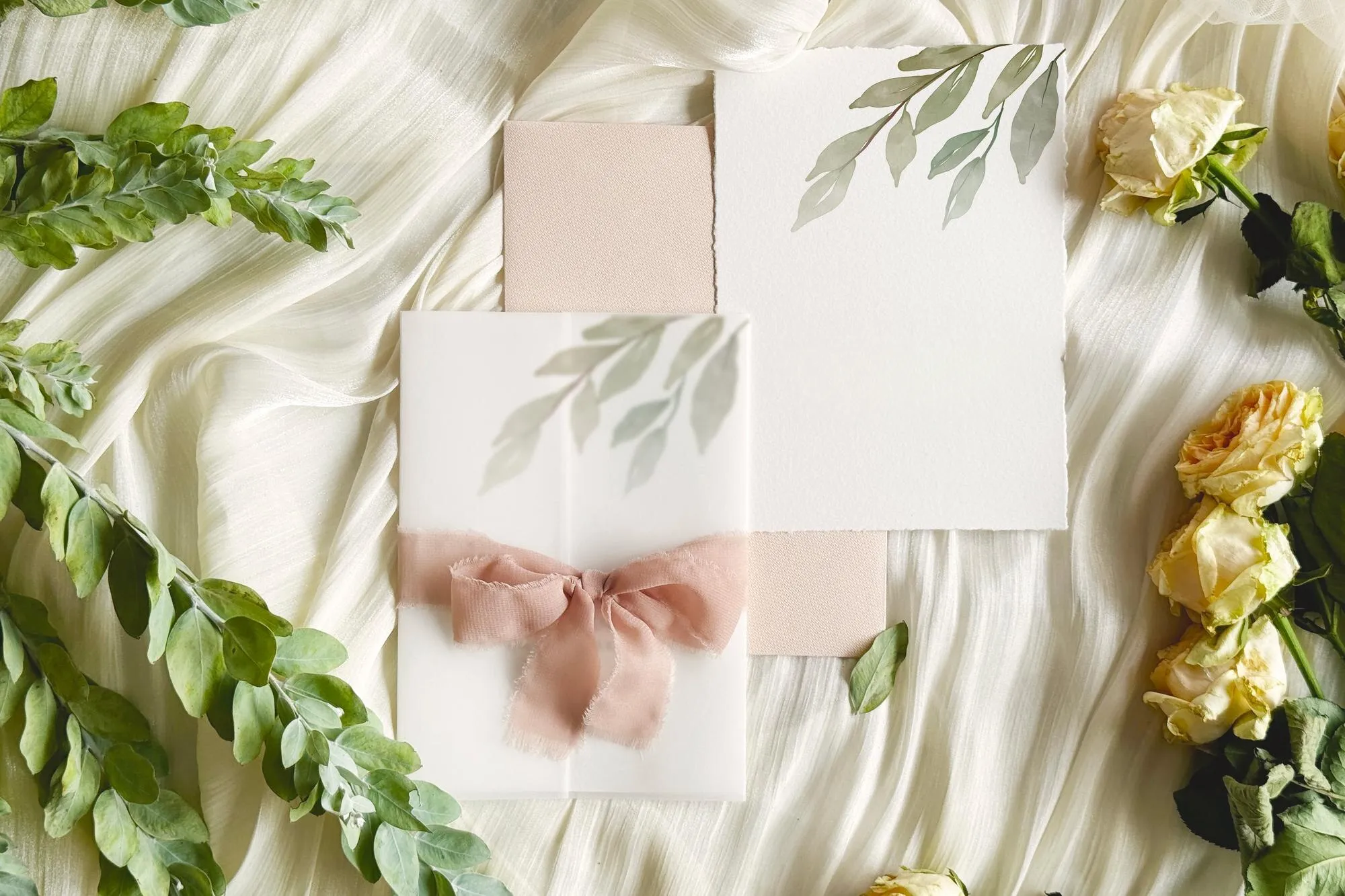
Vellum is great for card making too. It makes simple cards look professional. Here are some ideas:
- Use vellum as a fancy overlay for backgrounds
- Make sentiment strips with printed or handwritten messages
- Make detailed flower embellishments with vellum layers
Paper Lantern Projects
Make ordinary lighting special with vellum. Paper lanterns become magical with this material. Try different colors and textures for unique lighting.
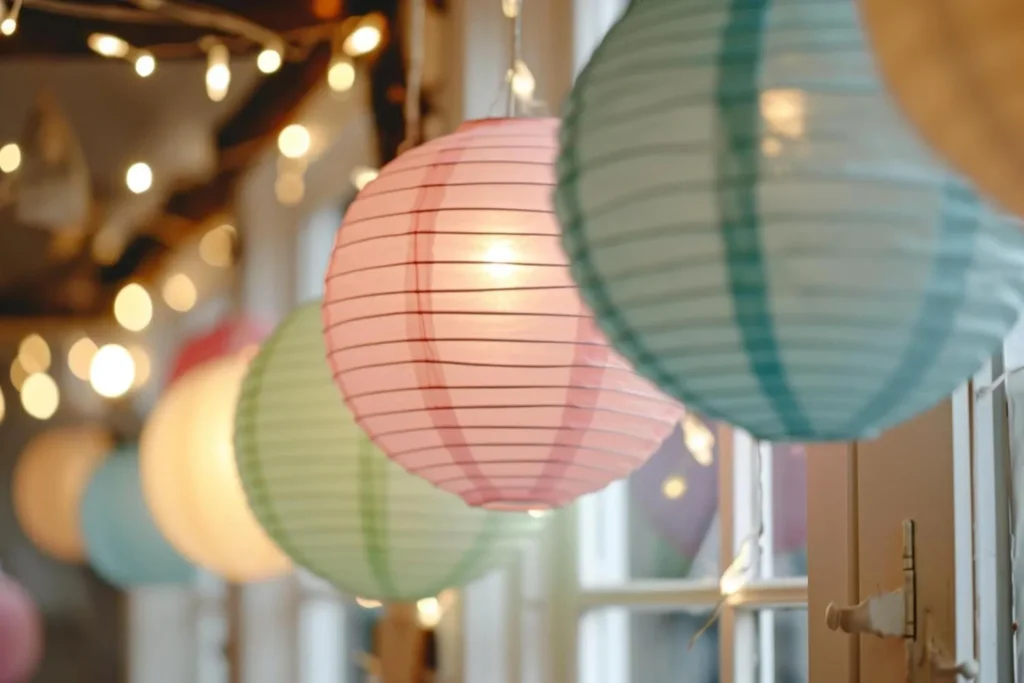
| Vellum Crafting Tip | Recommended Method |
|---|---|
| Adhesive Technique | Use acid-free glue sticks or decorative clips |
| Printing Considerations | Allow extra drying time for ink |
| Cutting Advice | Use sharp scissors to prevent blade dulling |
Don’t forget to try different Types of vellum paper finishes and colors. From matte to shiny, each one offers new creative chances.
Printing Techniques and Best Practices
Mastering vellum printing techniques is key. You need to know how to handle this delicate paper. Printing on vellum requires careful attention for crisp, professional results. Choosing the right printing method is essential for different projects.
- Sheet-fed offset printing with soy-based inks
- Sheet-fed UV printing using photo-reactive inks
- Screen printing for larger images
- Foil stamping with metallic colors
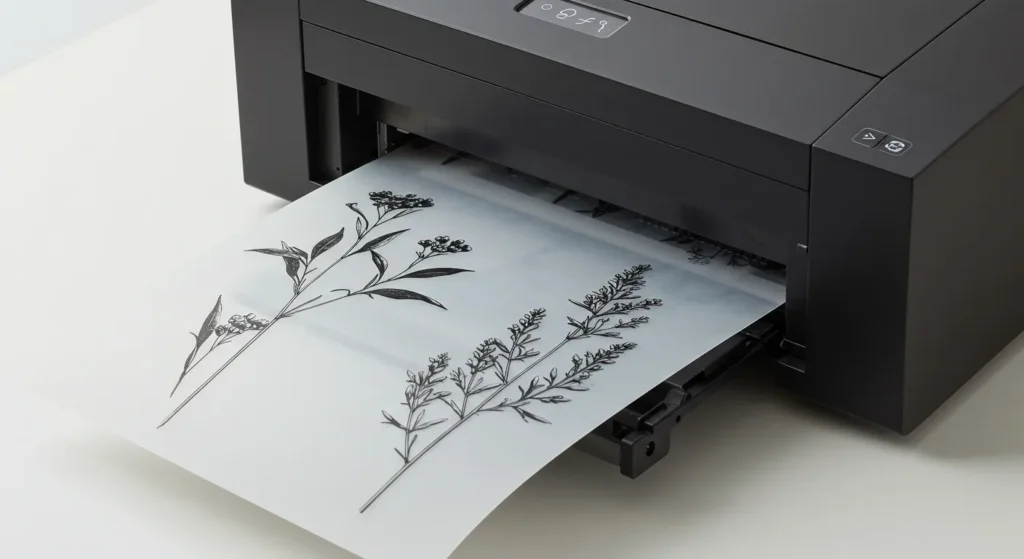
Inkjet printers are best for vellum because they handle paper gently. Laser printers can cause curling or wrinkling due to heat. Always test print on regular paper first to check alignment and color.
| Printing Method | Best Used For | Recommended Paper Weight |
|---|---|---|
| Inkjet Printing | Delicate designs, wedding invitations | 17-29 lbs (more translucent) |
| Sheet-fed UV Printing | Professional materials | 30-48 lbs (more stable) |
| Screen Printing | Large images, short runs | 170-300 gsm |
Here are some pro tips for successful vellum printing:
- Use manual feed tray to prevent paper jams
- Select appropriate printer settings
- Allow sufficient drying time
- Handle printed vellum carefully to avoid smudging
Knowing these vellum printing techniques will help you get professional-quality prints. This is useful for both creative and business projects.
Creative Layering and Dimensional Effects
Vellum layering is a creative way to add depth and interest to projects. This material is translucent, making it perfect for creating stunning visual effects. It turns simple designs into breathtaking works of art.
Exploring vellum’s use can transform your projects. It’s all about using its translucent nature to add depth and interest. This makes your designs stand out.
Overlay Techniques for Maximum Impact
Vellum layering can change the look of your designs dramatically. Here are some overlay techniques to try:
- Create soft color diffusion by placing colored vellum over base designs
- Use partial overlays to highlight specific design elements
- Experiment with graduated opacity for subtle depth effects
Combining Vellum with Other Papers
Mixing vellum with other papers can create amazing textures and visuals. The right mix can add elegance to your designs.
| Paper Type | Vellum Layering Effect | Best Used For |
|---|---|---|
| Cardstock | Softens background | Greeting cards |
| Watercolor paper | Creates dreamy wash effect | Art journals |
| Textured paper | Adds depth and intrigue | Scrapbooking |
Creating Depth in Design Projects
To master vellum layering, focus on building visual depth. Use adhesive foam to add physical depth. Choose colors that complement each other and experiment with layer placement for better visual appeal.
Vellum’s translucent nature lets underlying patterns show through, adding sophistication. It’s perfect for cards, scrapbooks, or art. Types of vellum paper layering opens up a world of creative possibilities.
Care and Handling Guidelines
Vellum paper needs careful handling to keep it in good shape. How you handle it can affect its life and look. Always make sure your hands are clean to avoid smudges.
“Treat vellum like a precious artifact, and it will reward you with timeless beauty and durability.”
Here are some important steps for vellum care:
- Wash and dry hands thoroughly before handling
- Use cotton gloves for extended contact
- Store in cool, dry environments with 25-40% relative humidity
- Avoid direct sunlight and extreme temperature changes
When working with vellum, follow these special handling tips:
- Allow extra drying time for ink (up to 50% longer than standard paper)
- Use acid-free adhesives for best results
- Print in small batches to prevent printer heat damage
- Let printed pages rest 10-15 minutes before moving
Proper storage is key for vellum’s quality. LED lighting is the safest choice to avoid damage. For long-term care, consider professional methods like the Chicago String Method to prevent warping.
By following these care guidelines, you can keep your vellum documents and projects looking great for years.
Special Effects and Artistic Applications
Vellum paper is a treasure trove for artists and crafters. Its translucent nature makes it ideal for exploring special effects and techniques. These can turn simple projects into stunning works of art.
Working with vellum demands a gentle touch and specific techniques. These bring out its enchanting qualities. Whether you’re an experienced artist or a hobbyist, mastering these methods can enhance your art.
Embossing Magic
Embossing turns vellum into a textured wonder. There are two main ways to do this:
- Heat embossing: Creates raised, glossy designs using special powder
- Dry embossing: Adds dimensional patterns without additional materials
Watercolor Wonders
Watercolor techniques on vellum create soft, ethereal effects. Alcohol inks are great for this, making beautiful backgrounds. These allow designs underneath to show through.
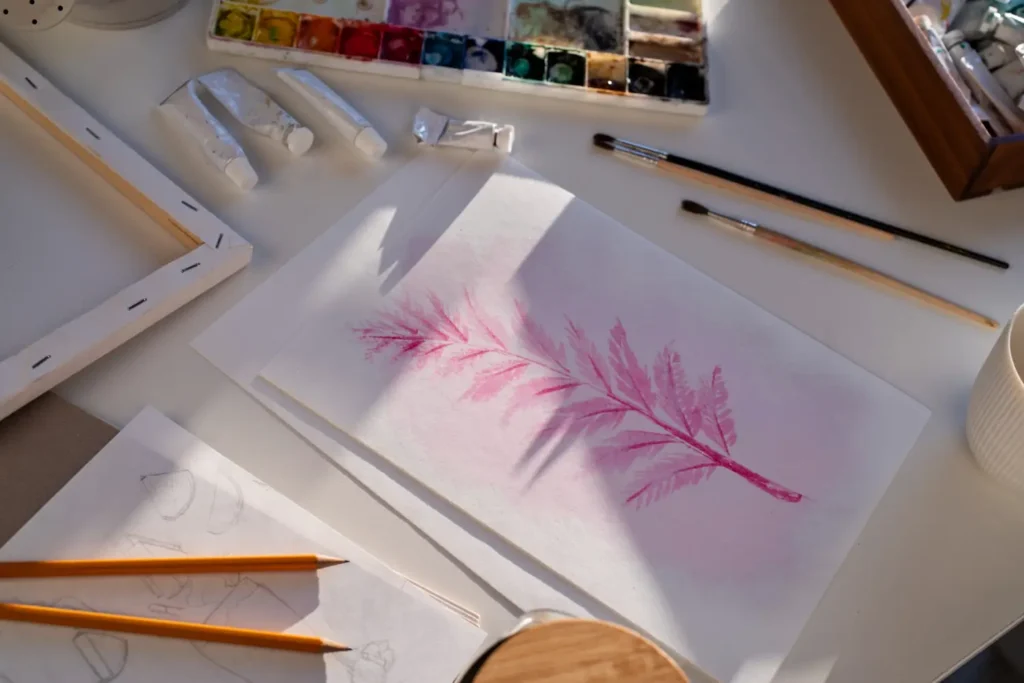
Mixed Media Integration
Artistic vellum techniques really come alive when mixed with other mediums. Here are some creative ways to do this:
- Layer vellum with specialty papers
- Use washi tape for unique embellishments
- Create translucent overlays on solid backgrounds
With the right care and creativity, vellum becomes more than paper. It becomes a canvas for artistic innovation.
Conclusion
Vellum paper is a special material that connects old-world craftsmanship with today’s creative ideas. Your exploration of Types of vellum paper shows it’s more than just paper. It offers unique chances for both professionals and artists.
Vellum is used in many ways, from building designs to detailed scrapbooking. Its clear quality lets designers make complex, layered designs. It adds depth and allows for new techniques that regular paper can’t.
Whether you’re an architect or a craft lover, vellum is a flexible canvas for your ideas. It needs gentle care but, when used well, makes simple projects stand out. It turns ordinary into extraordinary.
Even as technology and art methods change, Types of vellum paper stays a timeless choice for creativity. Your look into its many uses shows it’s more than a writing surface. It’s a versatile tool, limited only by your imagination and vision.
FAQ
Q: What is vellum paper made from today?
A: Today, Types of vellum paper is mostly made from plasticized cotton. This is a big change from its old days made from animal skin. It looks similar but is better for the planet and cheaper to make.
Q: Can I use vellum paper for printing?
A: Yes, you can print on vellum with inkjet, laser, and plotter printers. Just pick the right vellum for your printer. Also, let it dry for a long time to avoid smudges.
Q: What are the main creative uses for vellum paper?
A: Vellum is great for many creative projects. You can use it for scrapbooking, making cards, and creating paper lanterns. It’s also good for layered designs, mixed media art, and techniques like embossing and watercolor.
Q: How do I properly store and handle vellum paper?
A: To keep vellum in good shape, always handle it with clean hands. Store it flat in a cool, dry place. Use the right adhesives and let wet media dry for a long time.
Q: What professional fields commonly use vellum?
A: Architects and engineers often use vellum for drawings, blueprints, and layouts. Its clearness makes it easy to layer designs. It’s also durable, keeping documents safe for a long time.
Q: What makes vellum paper unique?
A: Vellum stands out because it’s translucent and comes in different weights and textures. These qualities make it perfect for both work and creative projects.
Q: Are there different types of vellum paper?
A: Yes, there are many types of vellum for different needs. You can find it for crafting, drafting, printing, and specialty uses. Each type has its own thickness, transparency, and might have colors or patterns.
Q: Can I use watercolors on vellum?
A: Absolutely! Watercolors work well on vellum, creating beautiful, soft effects. Just remember to wait a long time for it to dry. Also, know how the paper reacts with water.
